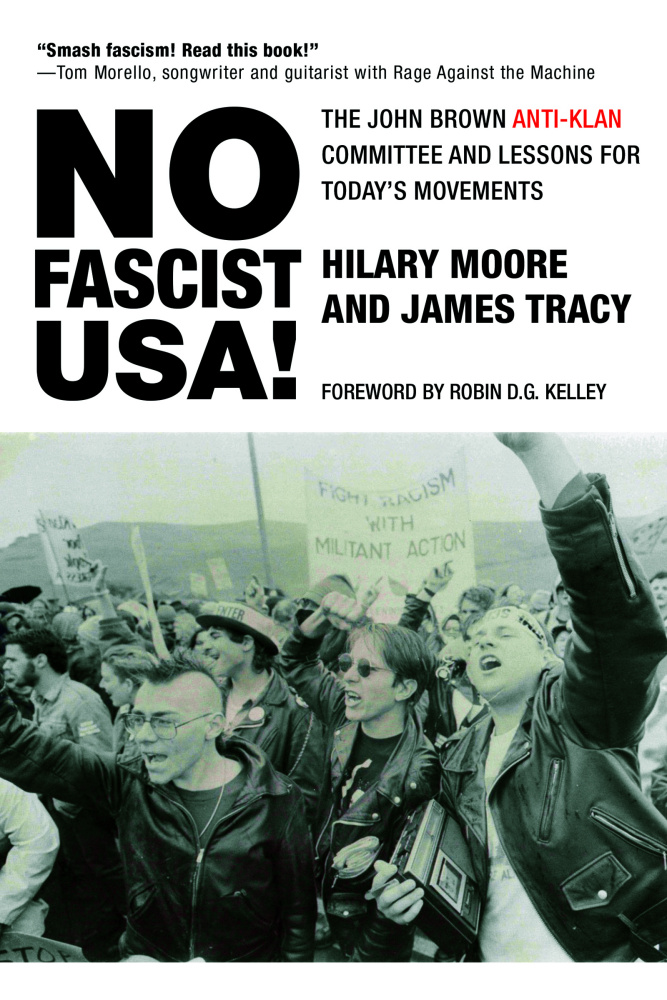
The election of Donald Trump in 2016 was not the first time in U.S. history that an electoral shift to the right emboldened far-right forces in the streets. To take one example, the Ku Klux Klan endorsed Ronald Reagan in his presidential run in 1980 and white supremacist groups grew much more ambitious with his election. In response, the 1980s and 1990s saw a lot of anti-racist and anti-fascist organizing, and there is much to learn from those experiences. Hilary Moore and James Tracy’s book No Fascist USA! The John Brown Anti-Klan Committee and Lessons for Today’s Movements, published earlier this year by City Lights Books, helps us to access some of this recent instructive history. They tell the story of one of the most militant white anti-racist formations of that period, the John Brown Anti-Klan Committee. With significant leadership from lesbians, John Brown chapters across the U.S. – frequently working closely with Black and Brown organizations – confronted fascists in prisons, schools, neighborhoods, police departments, punk scenes, and the streets. As Robin Kelley notes in the foreword, “They saw themselves as comrades, not allies, in a life-and-death struggle to stop fascism in its tracks.” And many involved in the Committee helped to lay the groundwork for the contemporary movement against the prison industrial complex. Making use of activist publications, news coverage, and interviews with former members, Moore and Tracy trace the trajectory of the Committee and distill concrete lessons for today’s organizing efforts.
I learned so much in 2018 while offering editorial feedback on an early version of the manuscript that became this book. The final version is even better. I recommend it!
Here’s one gem from Moore and Tracy’s book:
What happens when the state is unable or unwilling to respond to racist violence? No-platforming is one such form of forceful action that the John Brown Anti-Klan Committee waged to successfully deny racist ideas from spreading. Though controversial, it remains a strategy worth studying and learning from today. Activists who want to confront the right on these terms should do so with an understanding of how racists have adapted their own strategies over time. Through the use of social media, they have honed victimization to an art. They continue to portray their political opponents as intolerant authoritarians, and themselves as patriotic defenders of civil liberties. This position has become harder to defend as right-wing terrorism has escalated. The most effective method to deprive them of this propaganda tool is through strategic flexibility. There are times when physical self-defense is absolutely critical and others when mass mobilizations are truly the most effective approach. Following the example of the John Brown Anti-Klan Committee, the surest way to know the difference is to build organizations able to make strategy, analyze conditions, and recuperate from mistakes.